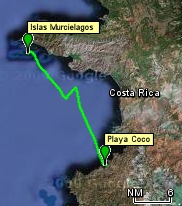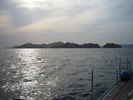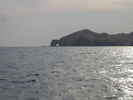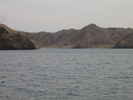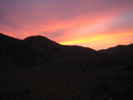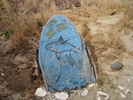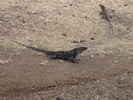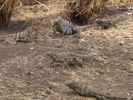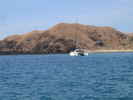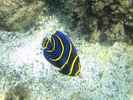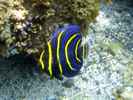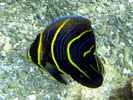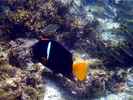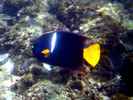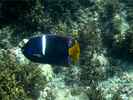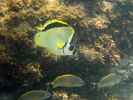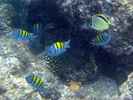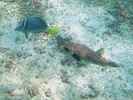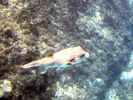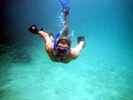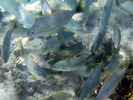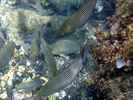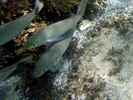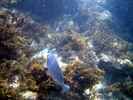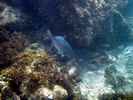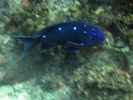The Bat Islands (Islas Murcielagos)After five days in Playa del Coco, we decided to do a little exploring of the region via boat. Of particular interest were the Islas Murcielagos, or the Bat Islands, that we had passed on our way in. So we pulled up our anchor at about 11:00 am and, because there was a good wind blowing, we had a very nice sail back across the Gulf of Papagayos to the islands, about 25 miles in 5 hours. The Bat Islands are part of a huge 230,000 acre national park that covers much of Northern Costa Rica. We were the only boat there as we dropped the hook in the anchorage as shown in the Rains' cruising guide. About 10 minutes later, two park rangers came out in a dinghy to tell us that we had to pay $6/person/night to visit the park. This seemed like a reasonable fee to us, so we followed them back to shore so we could pay and get our receipts. The rangers that came by the boat were Ronald and Ronald, and at the headquarters we also got to meet Luis. They showed us around the headquarters, told us about the varieties of species living on the islands, outlined their overall responsibility and the organization of the national park, and in general seemed to want to spend as much time with us as possible, probably because they don't get too many visitors here. After accepting an invitation to breakfast the next morning, we made our way back out to RHAPSODY for the sunset and dinner. The next morning we dinghied into shore for the 8:00 am breakfast appointment, but as it turned out, Ronald, Ronald, and Luis had to leave almost immediately to take the park service boat around the island to chase off some fishermen. There is no fishing in the national park, despite what might be said in the cruising books. So we were left with the main Jefe, a ranger named Samba, who had been there 14 years, and had built the ranger station himself, while camping in a tent during his first year on the island.
As we ate our Tico breakfast of rice and black beans with a little yogurt, and some freshly brewed coffee, Samba told us more about the islands and how he had come to be there. After breakfast, we stepped outside where there were dozens of Iguanas lounging around in the sun outside the station. Finally we bid our adieus, anxious to do a little snorkeling in the clear warm waters around these islands. We stopped back at RHAPSODY, changed into swimsuits, got our snorkel gear and landed at a nearby beach, from which it was an easy 20-30 yard swim to a very nice extended reef. The water was very clear, visibility perhaps 35-50 feet. We could easily see RHAPSODY's anchor chain on the bottom in 25' of water! And the snorkeling was excellent. No jellyfish to be seen, but tons of different kinds of fish. We swam among large schools of mullets, saw very large (14-16 inch) Angel Fish, and in general had a great time snorkeling. We were humourously pestered by this one Puffer Fish that followed us for about 100 yards. He would turn away when I would swim towards him, but kept creeping closer and closer as we swam away! Later in the day, we made a chance call on the VHF and got ahold of SOUTHERN BELLE, who was leaving Bahia St. Elena and planning on stopping here in the Bat Islands later that day along with KETCHIN UP. I was looking forward to seeing George, Melinda, and Joshua from SB again, as well as Noel, Ashley, and the three boys on KU. So when they pulled in, we went around in the dinghy to say hi to them. Later that night, George came over to RHAPSODY for a beer and a little jamming on the guitars. We spent one more full day in the anchorage at the islands. Tahsin and Rengin from DELFIN SOLO had given George this neat snorkeling dive toy. You would tow it behind a dinghy at low speed and hang on to it. By tilting it down, you would dive under the water and tilting it up would return you to the surface. We had great fun playing with that for a couple of hours, and doing more snorkeling of the reefs. After two nights in the anchorage, We decided to pull up anchor and explore another bay close by: Bahia Huevos. |
